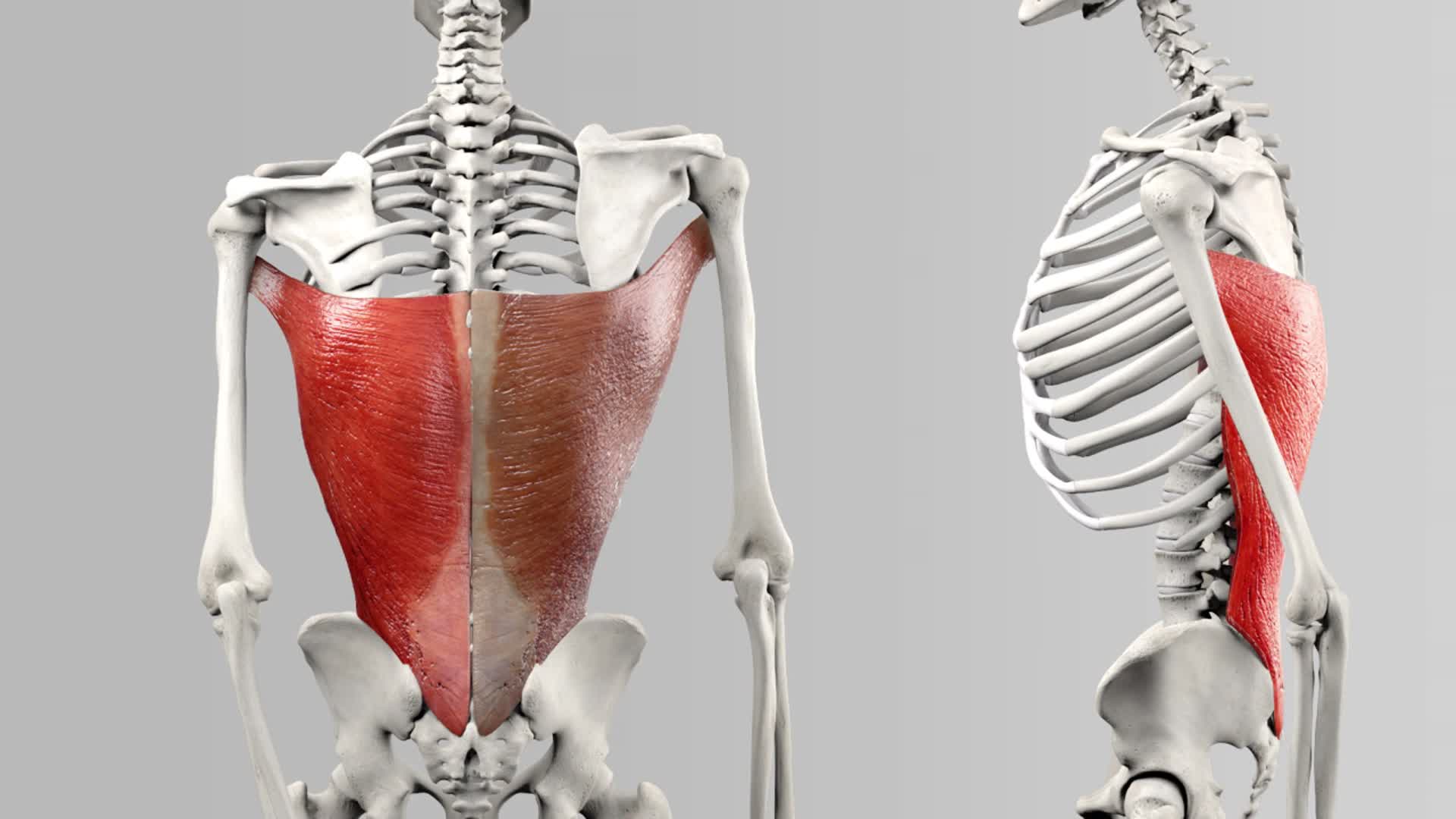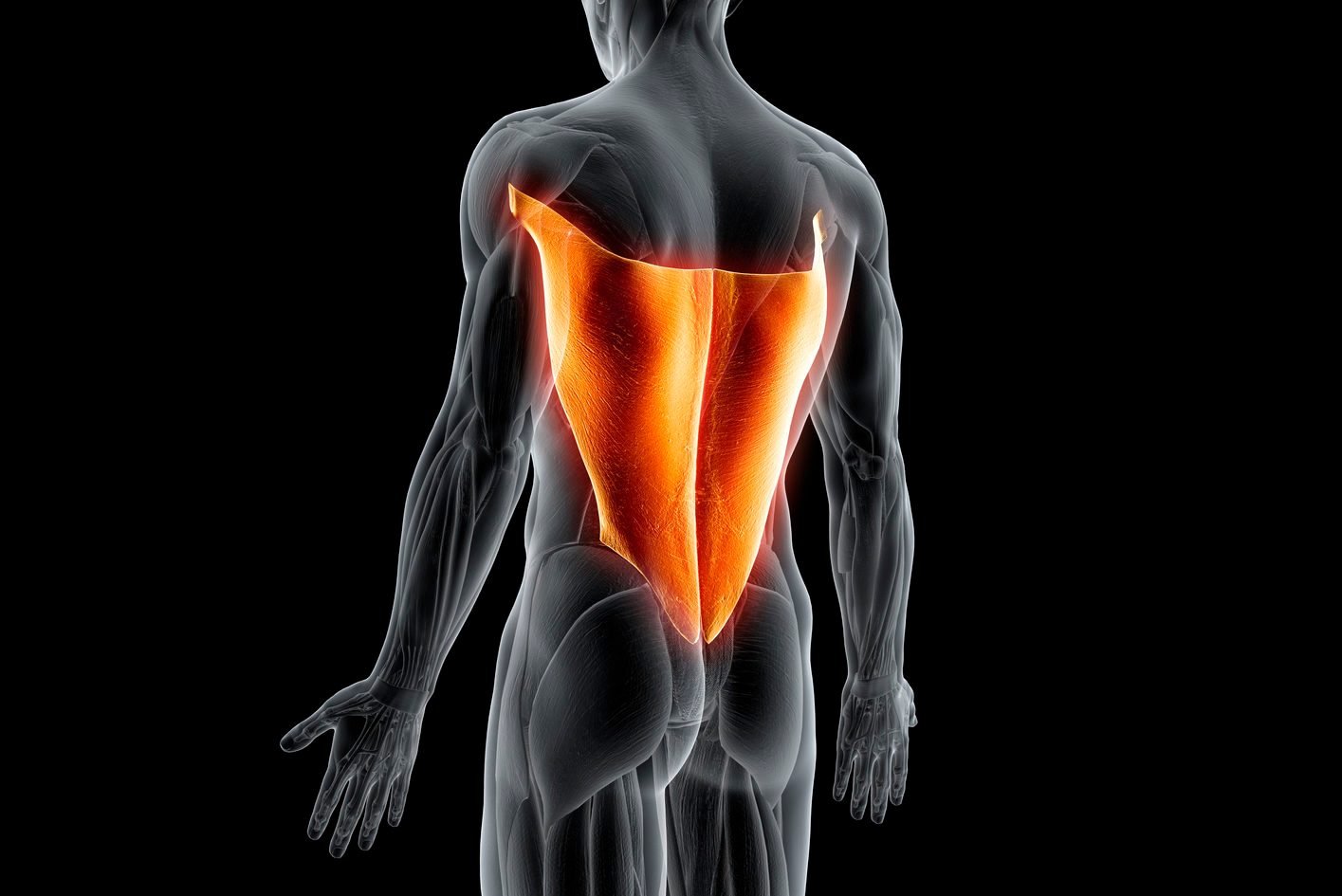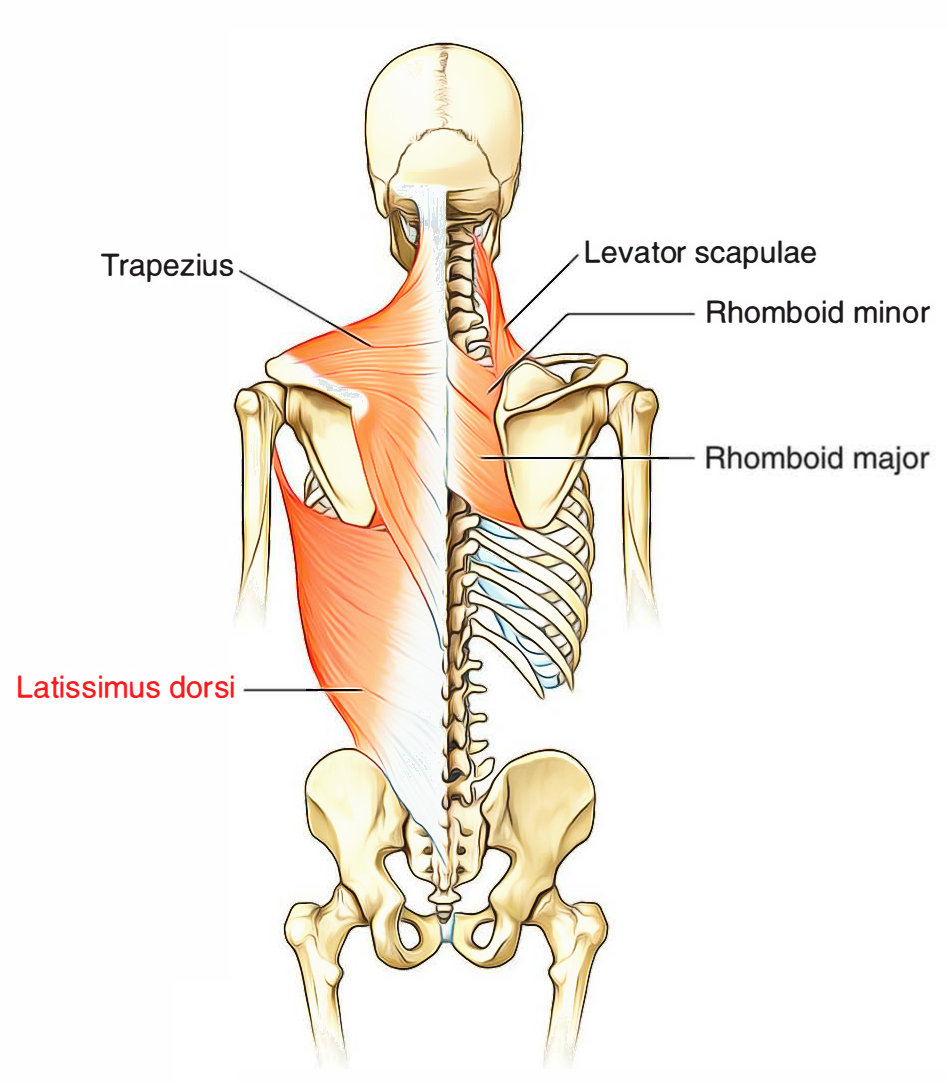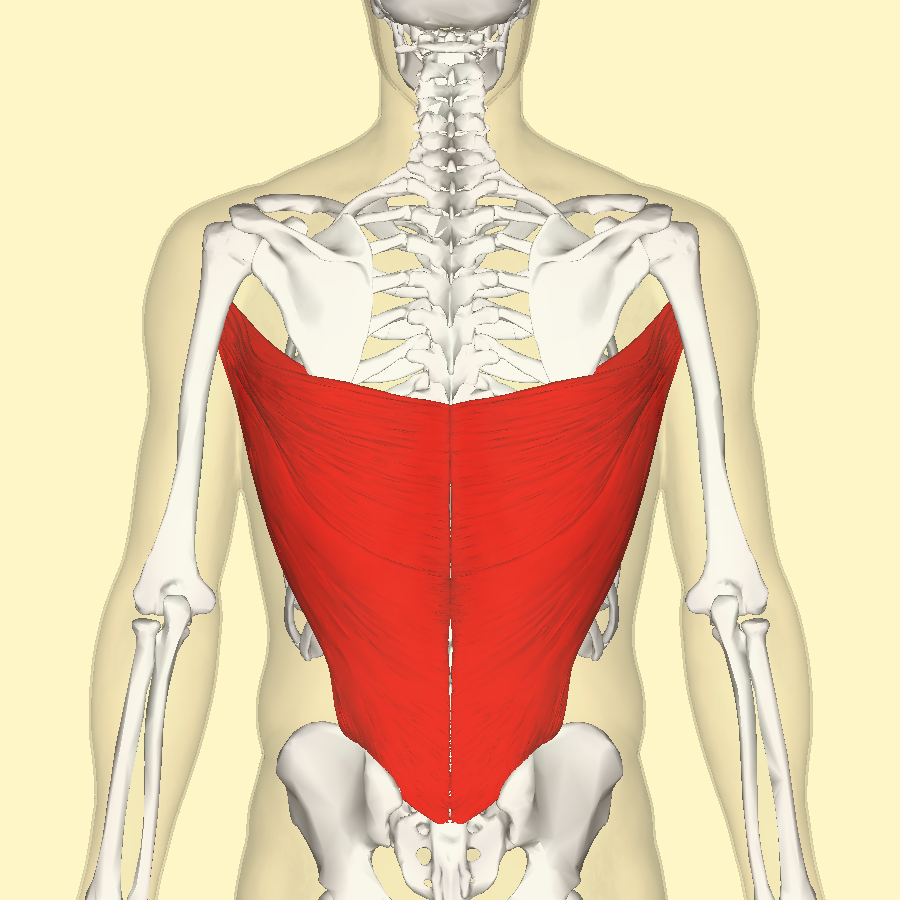:max_bytes(150000):strip_icc()/GettyImages-499158109-57a6c9ed5f9b58974ab33d7c.jpg)
Latissimus Dorsi Anatomy and Function
Latissimus dorsi muscle Musculus latissimus dorsi Related terms: Latissimus dorsi Definition Origin: Spinous processes of thoracic T6-T12, thoracolumbar fascia, iliac crest and inferior 3 or 4 ribs

FileLatissimus dorsi muscle frontal3.png Wikimedia Commons
The latissimus dorsi ( / ləˈtɪsɪməs ˈdɔːrsaɪ /) is a large, flat muscle on the back that stretches to the sides, behind the arm, and is partly covered by the trapezius on the back near the midline.

Musculus latissimus dorsi DocCheck
latissimus dorsi, widest and most powerful muscle of the back. It is a large, flat, triangular muscle covering the lower back. It arises from the lower half of the vertebral column and iliac crest (hipbone) and tapers to a rounded tendon inserted at (attached to) the front of the upper part of the humerus (upper-arm bone).

The Latissimus Dorsi
The latissimus dorsi (also known as " the lats ") is one of the widest muscles in the human body. It is a large, flat triangular-shaped muscle that runs across the lower posterior trunk between the ilium, thoracic vertebrae, ribs, scapula and humerus.It mainly provides movements at the shoulder joint.. As the most superficial muscle of the lower back, it covers almost all back muscles.

the muscles are labeled in red and white
Latissimus dorsi muscle (Musculus latissimus dorsi) The latissimus dorsi muscle (AKA: 'the lats muscle' or 'the lats') is the widest muscle in the human body. It is relatively thin and covers almost all back muscles at the posterior trunk, except the trapezius .

Latissimus Dorsi Pain 6 Causes and How to Treat Them The Healthy
Latissmus dorsi is a climbing muscle. With the arms fixed above the head, it can raise the trunk upwards, together with the help of pectoralis major. It is an important muscle in rowing, swimming (especially during the downstroke) and chopping. The muscle is also active in violent expiration, as it attaches to the ribs.

Get Rid of Latissimus Dorsi Muscle Pain with these Workouts & Treatments
The Latissimus dorsi is a powerful muscle that is responsible for several movements of the shoulder and arm, including extension, adduction, and internal rotation. Extension of the shoulder occurs when the arm moves away from the body, such as when reaching overhead or behind the back. The Latissimus dorsi muscle helps to extend the shoulder joint.

Image result for latissimus dorsi attachments Anatomy and physiology, Physiology, Muscle anatomy
Welcome to this tutorial on the latissimus dorsi muscle. We will take you through this muscles origin, insertion, action, blood supple and nerve supply. We h.

Latissimus Dorsi Supply and Functions Earth's Lab
Superficial extrinsic muscles of the back: trapezius, latissimus dorsi, rhomboid major, rhomboid minor, and levator scapulae Intermediate extrinsic muscles of the back: serratus posterior superior and serratus posterior inferior muscles.

FileLatissimus dorsi muscle back.png
The latissimus dorsi muscle also covers the tip of the shoulder blade (scapula). When the skin is removed, it is superficial and clearly visible. It helps protect and stabilize the spine while providing your shoulder and back strength. The muscles also help with shoulder and arm movement and support good posture.

Latissimus dorsi muscle wikidoc
The latissiumus dorsi is an extrinsic muscle of the shoulder. Attachments: Originates from the spinous processes of T7-T12, iliac crest, thoracolumbar fascia and the inferior three ribs. The fibres converge into a tendon that attaches to the intertubercular sulcus of the humerus.

Posterior Muscles at Cedarville University StudyBlue
The latissimus dorsi muscle is an extrinsic muscle of the back and is found in the lower back region. It is a broad, flat, convergent type of skeletal muscle. It is located: - superficial to the inferior angle of scapula, the eighth to twelfth ribs and their adjacent external intercostal muscles, and the serratus anterior, serratus posterior.
/images/library/167/musculus_latissimus_dorsi.png)
Latissimus dorsi muscle Anatomy, Function and Pathology Kenhub
The latissimus dorsi muscle is one of the largest muscles in the back. There muscle is divided into two segments, which are configured symmetrically along the backbone. The muscle is.

Latissimus Dorsi Muscle Artwork HighRes Vector Graphic Getty Images
What is the latissimus dorsi muscle? The latissimus dorsi muscle, commonly known colloquially as the 'lats,' is one of the largest muscles of the back, stretching across the lower posterior thorax. Its primary function is in upper extremity movement. However, it also serves as a respiratory accessory muscle.

Latissimus Dorsi Muscle of the Monday Balance Biomechanics
The latissimus dorsi muscle is a large, triangularly shaped back muscle that helps you do things like pull-ups, swimming and even breathing. It functions to stabilize your back while extending your shoulders.The latissimus dorsi muscle is often called the "lats" or the latissimus for short.

Latissimus dorsi muscle Wikipedia
An accessory subscapular-teres- latissimus muscle has been described. Latissimocondyloideus or dorsoepitrochlearis, a muscle found in 5% of bodies, may pass from the tendon of latissimus dorsi to the brachial and forearm fascia, to the humerus, to the lateral epicondyle and olecranon, or to the long head of triceps.